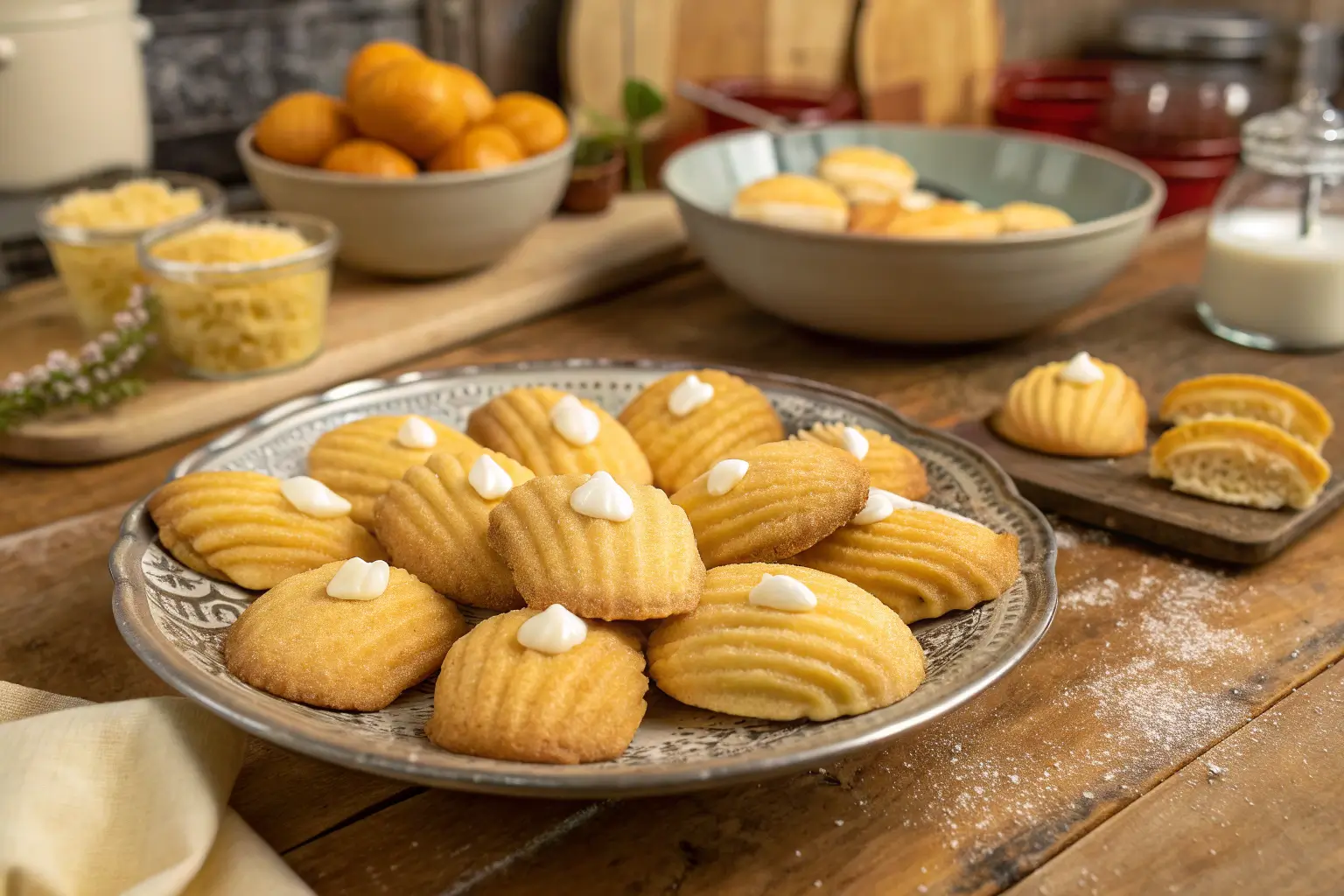Madeline cookies, also known as madeleines, might look like simple treats, but these delicate French butter cakes have left their mark on literature, inspiring Marcel Proust’s “Remembrance of Things Past.” Each batch of this classic French pastry yields about 24 pieces, making them a perfect choice for small gatherings or bigger celebrations.
The classic madeleine cookies recipes produce great results, but adding cream will improve their flavor and texture. This piece will guide you through making these elegant French delicacies with cream. You’ll learn how to make madeleines cookies with their signature golden edges and distinctive bump. The process requires the right madeleine pan and proper timing during the significant 10-14 minute baking window. These steps will help you create perfect madeleines that taste best straight from the oven.
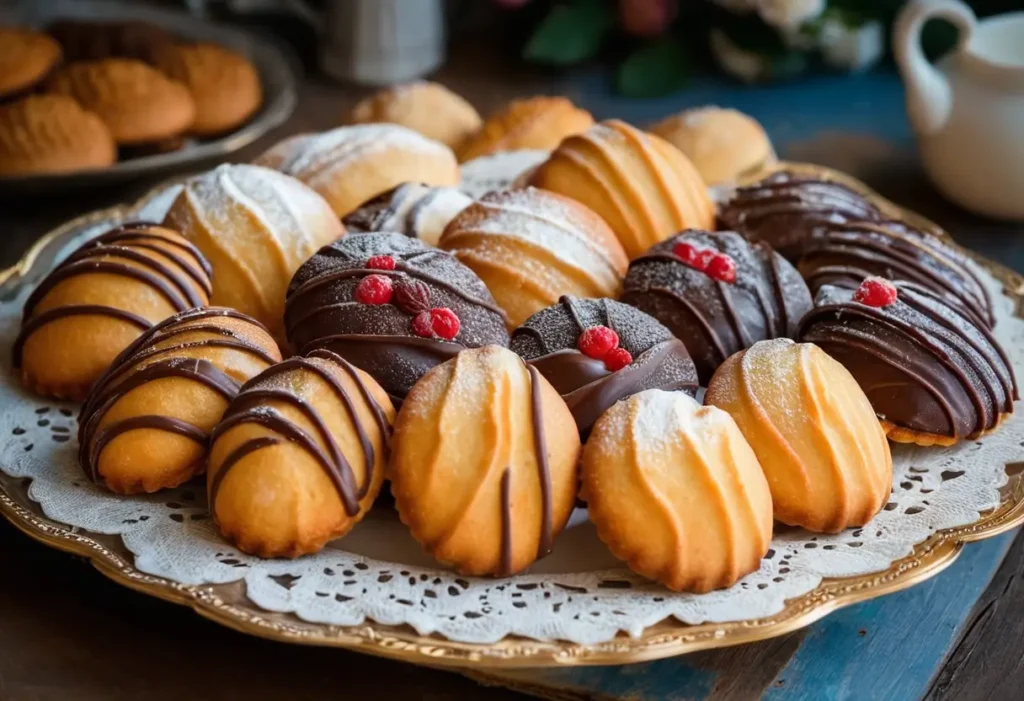
Table of Contents
Essential Ingredients for Cream Madeleines
The art of creating exceptional cream madeleines depends on choosing premium ingredients that blend perfectly together. Let’s discover the cream varieties that will raise these delicate French treats to new heights.
Types of cream to use
Heavy cream or double cream stands out as your best choice, containing approximately 48% milk fat. This high fat content creates an incredibly moist crumb with a velvety texture. Whipping cream gives you a lighter yet still decadent option with its 36-38% milk fat content.
Sour cream adds a subtle tanginess that pairs beautifully with the sweet notes. The cream’s richness keeps each bite tender and substantially enhances these beloved French pastries’ mouthfeel.
Other key ingredients
Perfect madeleine cookies start with unsalted butter. Browning the butter until it releases a distinct hazelnut aroma, known in French as beurre noisette, creates an extraordinary depth of flavor.
Fresh eggs are vital to achieve that characteristic light and fluffy texture. They incorporate essential air into the batter when whipped properly. Room temperature eggs blend more smoothly with other ingredients.
Your choice of all-purpose flour will shape the final texture. Soft flour, especially cake flour, produces the finest, lightest crumb because of its lower protein content. Sifting dry ingredients removes any lumps that could affect the delicate texture.
Sugar does more than just add sweetness. The Maillard reaction creates an appealing golden-brown exterior while keeping the finished cookies moist. Many bakers use both granulated and brown sugar because brown sugar helps with caramelization and creates subtle crispy edges.
The signature flavor profile comes from several aromatic elements. Earl Gray tea imparts a sophisticated taste, especially when you use loose leaves instead of tea bags. Lemon zest brightens the overall flavor – you can use Meyer lemons, regular lemons, or mix lemon and clementine zest. A touch of honey complements the browned butter’s flavor to create that unmistakable madeleine character.
Step-by-Step Baking Process for Madeline Cookies Recipe Using Cream
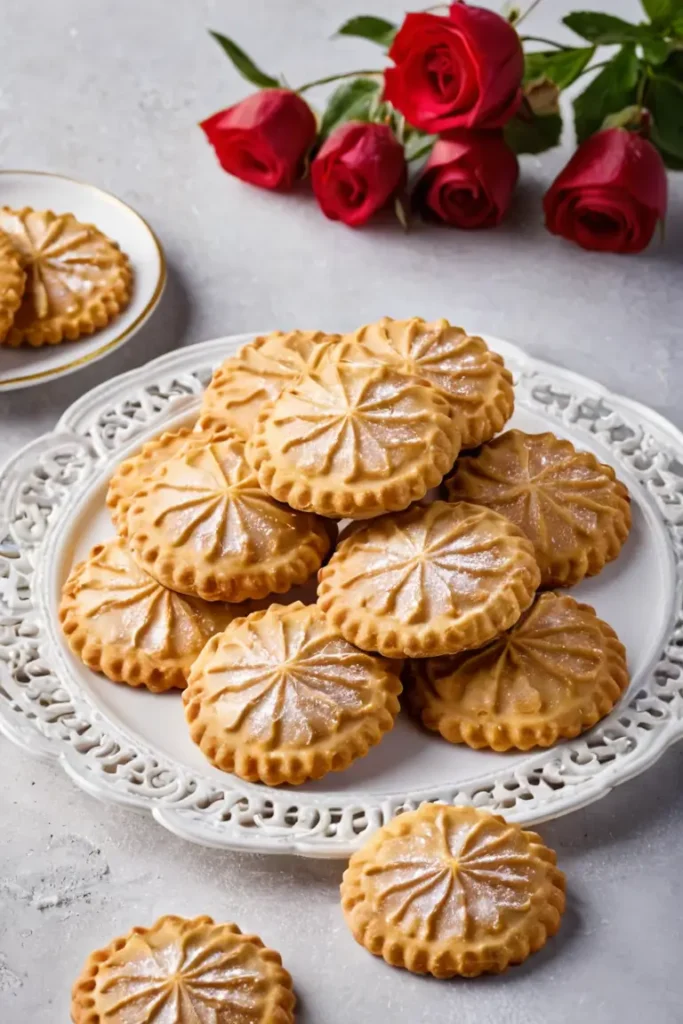
Perfect madeleines demand precision and careful attention to detail. Let me guide you through everything needed to create these delicate French treats.
Preparing the batter
Start by whisking eggs and sugar vigorously for 8-10 minutes until the mixture turns pale and thick. The vanilla extract and heavy cream should be folded in with care. A separate bowl works best to sift all-purpose flour, baking powder, and salt together – this prevents lumps. Add this dry mixture to wet ingredients gradually and avoid overmixing.
The cooled melted butter needs to be folded in next. Your batter should look smooth and shiny now. A plastic wrap should cover the bowl before you refrigerate it for 30-60 minutes. This chilling step helps create the signature hump on your madeleines.
Proper pan preparation
A metal madeleine pan creates better temperature shock and leads to higher rises. The molds need a coating of softened butter and a light dusting of flour. Give the pan’s edges a tap to distribute flour evenly. Using a non-stick madeleine pan can also help ensure easy release of the baked cookies.
Baking temperature and timing
Set your oven to 375°F (190°C). Take the chilled batter and spoon it into prepared molds, filling each cavity three-quarters full. Alternatively, you can use a piping bag for more precise filling. The pan should go straight into your hot oven. Small madeleines need 8-10 minutes, while larger ones take 11-13 minutes to bake.
Cooling and storage
Golden brown edges and springy centers signal they’re ready to come out of the oven. These treats need 5 minutes to cool in their molds before moving to a wire rack. Storage options include:
- Room temperature: Keep in an airtight container for up to 3 days
- Refrigerator: Extend freshness to 7 days
- Freezer: Store individually wrapped for up to 3 months
In spite of that, these delicate treats taste best fresh from the oven. The batter keeps well in your refrigerator for up to 2 days if you need to make them ahead.
Common Mistakes to Avoid When Making French Madeleines
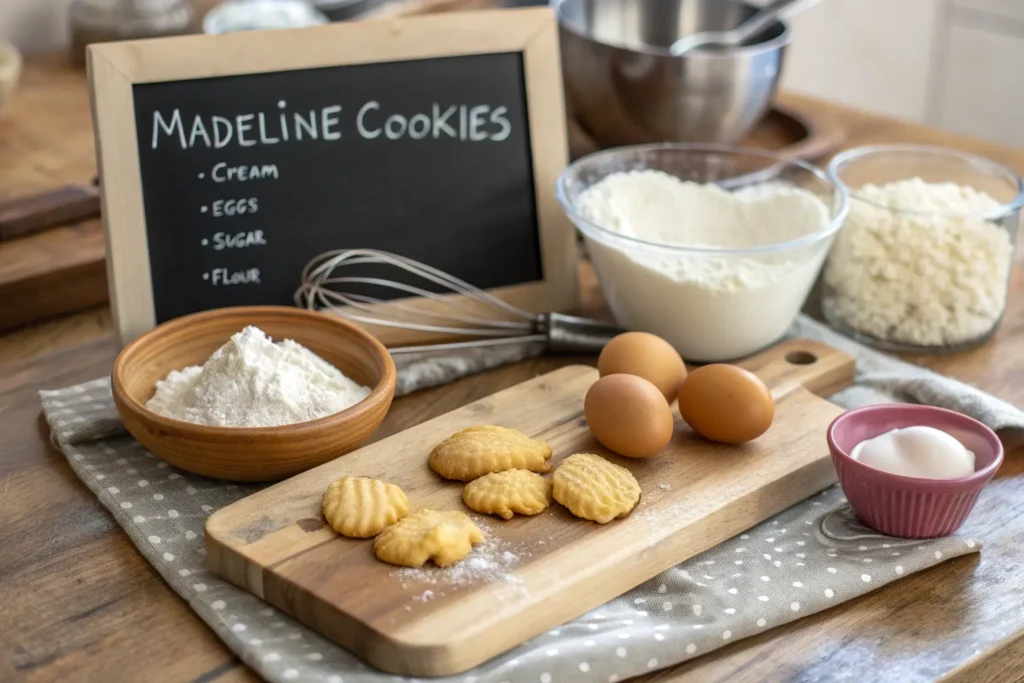
Perfect madeleines require attention to detail and avoiding common mistakes that can ruin their texture and appearance. Let me share some significant mistakes you should avoid during your baking experience.
Overmixing the batter
Madeleine batter needs gentle handling because of its delicate nature. Overmixing guides you toward dense, tough cookies without their signature light and fluffy texture. Excessive mixing will deflate the air you beat into the eggs and waste the time you spent getting to the perfect ribbon stage.
You should fold the flour mixture gently into the beaten egg mixture to get the best results. The batter needs to keep a thick, silky, and shiny consistency. Your visual cues matter here – stop mixing once the flour streaks disappear from the mixture.
There’s another reason to be careful when combining ingredients at different temperatures. You need to pay attention when unifying cold butter with room-temperature components. Your batter should stay smooth without becoming heavy or greasy.
Wrong pan temperature
The right pan temperature is a vital part of getting that coveted madeleine hump. Your Madeleine cookies will turn out flat without their characteristic bump if you put the batter in a pan at the wrong temperature.
This is what happens: madeleines need high heat (425°F) first to encourage the original rise, and then the temperature drops to 400°F for the rest of baking. This temperature shock helps form bigger humps by a lot.
Tests with frozen versus unfrozen pans showed something interesting – madeleines in unfrozen trays had much smaller bumps. Chilling your pan becomes essential to achieve that classic shape.
Timing is vital – you’ll need to lower the oven temperature if your madeleines brown too fast before their centers cook. They’re probably overbaked if they feel dry right out of the oven. A perfect madeleine should spring back when you press its center lightly.
Note that these treats taste best fresh, ideally the same day you bake them. You can create madeleines worthy of a French patisserie by avoiding these common mistakes and following the right temperature guidelines.
Tips for Perfect Texture in Your Madeline Cookies Recipe Using Cream

Becoming skilled at temperature control and timing is essential to create perfect madeleines. These delicate French treats just need careful attention to detail so their distinctive characteristics shine through.
Getting the signature bump
The prized madeleine hump comes from a carefully arranged temperature dance. The batter needs thorough chilling – at least 2 hours but preferably overnight. This long rest relaxes the gluten and makes tender madeleines that are more likely to form that coveted hump.
Temperature shock creates the real magic. Your filled madeleine pan should go in the freezer for 10 minutes. Heat your oven to 425°F with a baking sheet inside. The cold pan meeting the hot oven forces the batter up and creates that signature rise.
The temperature drops to 400°F after 3 minutes of high heat, and baking continues for about 8 minutes. This temperature change will give a proper development to both the hump and overall texture.
Achieving golden edges
Metal molds make better madeleines than silicone ones because they hold heat better and create crisper edges. A generous coating of butter and flour in the molds creates that desired light crust on the shell side.
The edges should turn golden brown as they bake, while the hump stays slightly paler. You’ll know they’re ready when they feel springy and the centers bounce back softly.
Timing plays a crucial role in texture. A thin crisp exterior should wrap around light, buttery centers. Take them out of the pan after about 5 minutes – letting them cool completely can make the sugars stick.
Note that madeleines taste best when served warm. Their aroma fills the air at this moment, and you get that perfect balance between the crisp exterior and soft center.
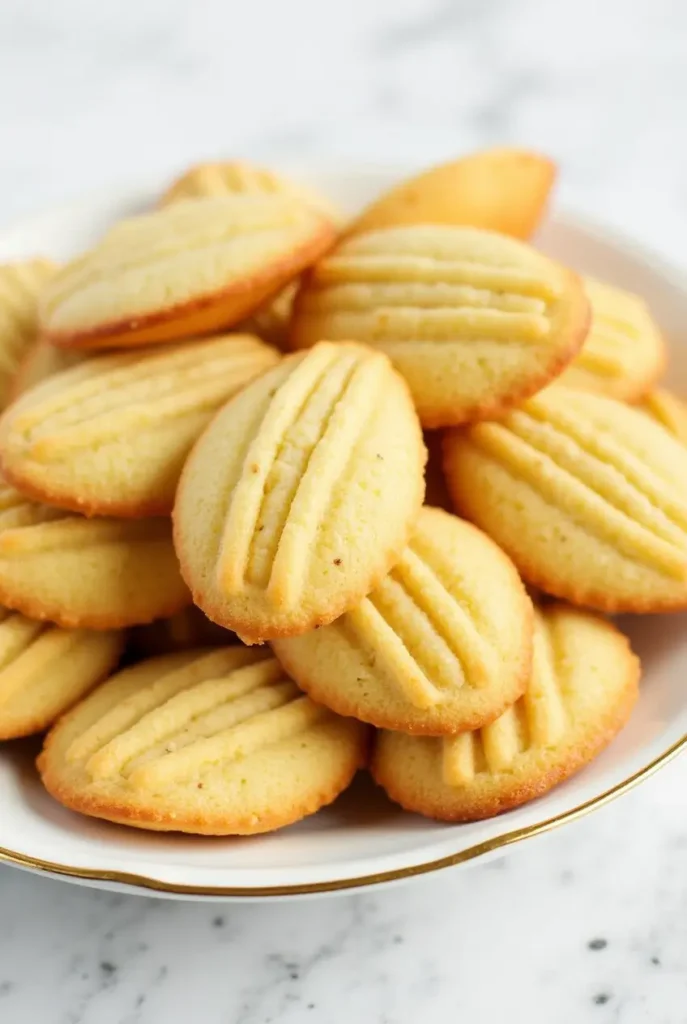
Conclusion
These elegant French treats demand patience and attention to detail, but the results will amaze you. Classic madeleines taste wonderful on their own, and adding cream will lift them into pure decadence.
A perfect madeleine balances golden, crispy edges with tender, buttery centers and that signature bump. Quality ingredients, proper temperatures, and precise timing lead to the best results. Your success depends on chilled batter, metal pans, and temperature shock to achieve those picture-perfect treats.
Fresh madeleines taste incredible right out of the oven. They make perfect treats for special occasions or weekend baking projects. You can discover more classic recipes at recipesnutritious.com for additional recipes and meal inspiration. These techniques and tips will help you create madeleines that rival any French patisserie and bring Parisian charm to your kitchen.
FAQs
Q1. How can I ensure my madeleines stay moist and tender? To keep madeleines moist, consider adding a simple glaze made from powdered sugar, lemon juice, and water. This protective coating helps prevent the cakes from drying out too quickly, extending their freshness.
Q2. What gives madeleines their distinctive buttery flavor? The unique taste of madeleines comes from gently folding melted butter into the batter at the end of the mixing process. This technique creates a shiny finish and imparts a delightful nutty-buttery texture to the cakes.
Q3. Can I make madeleines without a special mold? While traditional molds are ideal, you can use a mini muffin pan as a substitute. However, keep in mind that the classic shell-shaped sponge cakes may not be achievable with alternative pans.
Q4. How do I achieve the signature madeleine hump? To get the characteristic hump, chill the batter for at least 2 hours (preferably overnight), then place the filled mold in the freezer for 10 minutes before baking. The temperature shock when the cold batter meets the hot oven creates the desired rise.
Q5. What’s the secret to perfectly textured madeleines? For the ideal texture, use a metal pan, properly prepare it with butter and flour, and pay close attention to baking times. The edges should turn golden brown while the center remains slightly paler. Serve them warm for the best balance of crispy exterior and tender interior.

